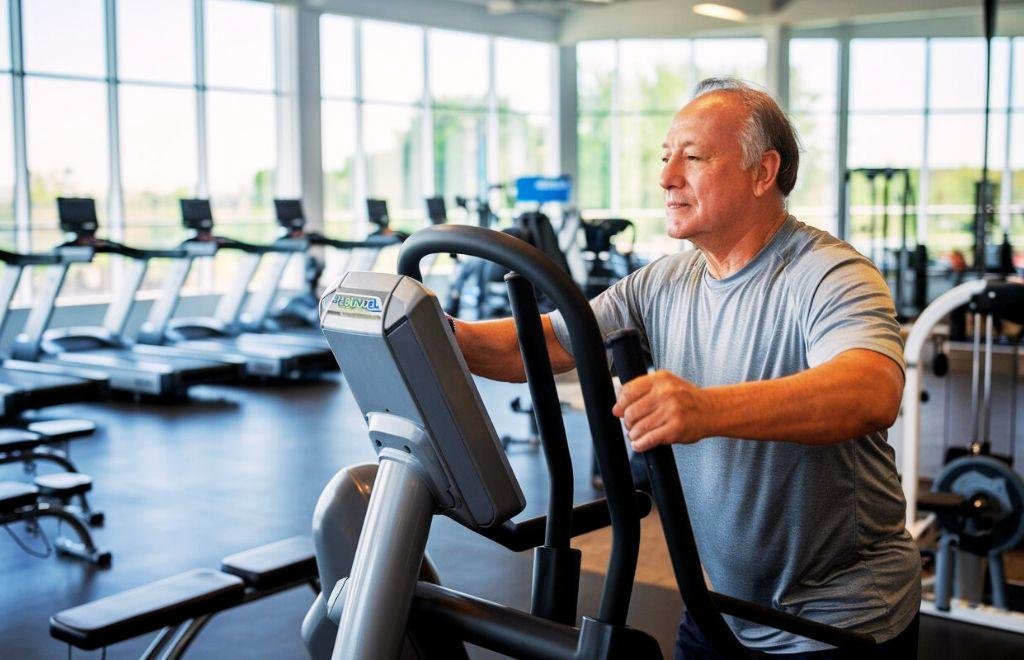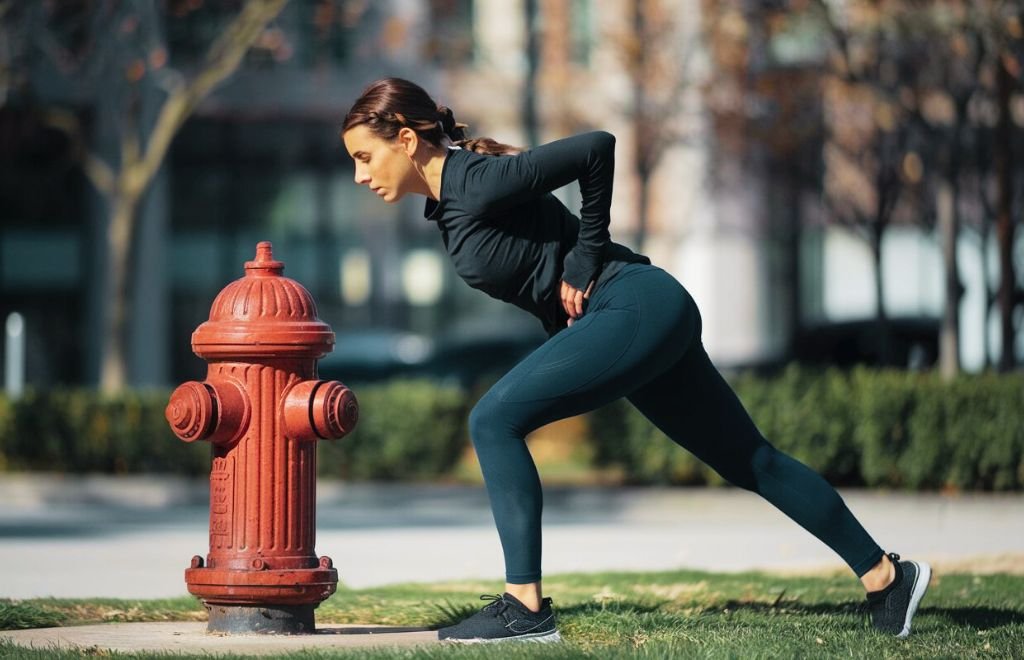4 Types of Exercise Good health depends critically on exercise. Still, we usually restrict ourselves to one or two forms of exercise. People do what they enjoy, or what feels most effective, hence some features of exercise and fitness can be overlooked. Actually,
everyone should be working on aerobics, stretching, strengthening, and balancing. With a doctor’s permission, we enumerate here everything you need to know about every sort of exercise and provide samples to try.
When you think of exercise, you might picture demanding pursuits like jogging or biking—those that cause you to breathe, flush, and drip with sweat.
Although aerobic exercise is simply one kind of exercise, there are really three other sorts of exercise that are as vital: strength training, balance training, and flexibility training. Although it’s vital for raising fitness.
Every kind of exercise is valuable in its own right; experts advise that exercising all four kinds will maximize your fitness and help to prevent injury.
“Although aerobic exercise is very important, it’s not as effective for overall health” says co-director of the Mayo Clinic Sports Medicine Center, Dr.
Edward Laskowski, when people integrate all four kinds of exercise in their regimens. Rochester, Minnesota is it. Laskowski observed, “they all kind of go together” and compliment one another.
Strength training, for instance, builds muscles, which support and protect joints and therefore aid to prevent damage during aerobic exercise.
Balance exercises, meantime, can lower your risk of problems like ankle sprains and stabilize your motions by using muscular strength in a coordinated manner, Laskowski added.
Although you can be quite fit aerobically, Kelly Drew, an exercise physiologist at the American College of Sports Medicine, says “if you’re not flexible, you’re still going to pull something when you’re training.”
Because it increases your range of motion around your joints and guarantees proper performance of lifts and other strength actions, flexibility also helps you strengthen, explains Drew.
Live Science consulted professionals and examined the most recent scientific studies to compile the most significant information on various forms of exercise.
The four forms of exercise are broken out below. Every page addresses the advantages of the particular exercise style, including with recommended dosages and ways to prevent injuries during the activity. At last, we will offer strategies for including four forms of exercise into your program.
Aerobic exercise
For many biological processes, aerobic exercise—which accelerates heart rate and breathing—is vital. It works your lungs and heart, so boosting endurance. See your doctor for a medical checkup if you find yourself too tired to climb stairs.
If it’s only due to deconditioning, then you will need more aerobic activity to help condition your heart and lungs and supply enough blood to your muscles to enable their effective operation.

Aerobic exercise also lowers blood pressure, burns body fat, lowers blood sugar levels, lessens inflammation, and raises mood by relaxing blood vessel walls. Combined with weight loss, it can help reduce “bad” LDL cholesterol levels.
Aerobic exercise lowers your risk over long term of heart disease, stroke, type 2 diabetes, breast and colon cancer, depression, and falls.
Aim for at least 150 minutes a week of moderate-intensity exercise. Try swimming, brisk walking, jogging, cycling, dancing, or classes including step aerobics.
Whether you’re swimming laps at the local pool or hot cycling on the top workout bikes, your heart rate and oxygen intake will rise concurrently but technically differently.
Some activities, including weightlifting or strength training, are not aerobic (or cardio) since the oxygen intake (and heart rate increase) is not sustained for long enough to be categorized as such.
Beyond the rise in oxygen, however, what changes your body during aerobic exercise? Tom Cowan, an exercise physiologist, responds; but, we also consider the most effective aerobic activities and offer some advice on how you could increase your aerobic exercise capacity.
Marching in front of you
Standing tall with your feet together and arms at your sides starts position.
Lift your legs then bend your elbows and swing your arms.
March in many different forms:
March in-place.
March four walks forward then four backwards.
March in place with feet spread far apart.
Alternate wide and together marching feet out, out, in, in.
Techniques and advice:
Keeping your abs taut, look straight ahead.
Breathe naturally; avoid clenching your hands.
Simplify it by: March more slowly and avoid lifting your knees high.
Make it harder: march faster, raise your knees, and truly pump your arms.
Balance exercise
Balance exercises increase your capacity to control and stabilize your body’s position. This form of exercise is particularly crucial for older folks – as you age,
your capacity to know where you are in space, called proprioception, gets worse, which adds to a reduction in balance, said stated Kelly Drew, an exercise physiologist from the American College of Sports Medicine.

But balance exercises can benefit people of any age, even people who have gained or lost a lot of weight or those who become pregnant, which can throw off your center of gravity, Drew added.
These workouts are also essential for lowering injury risk. For example, if you sprain your ankle, you could be at risk for reinjury if you don’t retrain your balance, said stated Dr.
Edward Laskowski, co-director of the Mayo Clinic Sports Medicine Center in Rochester, Minnesota. That’s because when you sprain your ankle, the muscles around the joint stop contracting in a coordinated method, and this destabilizes the joint,
Laskowski explained. If you undertake balancing exercises after the injury, it retrains the muscles to contract simultaneously, which better stabilizes the joint during movements and prevents reinjury, he said.
And most athletes can benefit from balance training to help them maintain equilibrium during their sport activity. “[In] almost all athletic endeavors, you’re going to be on one foot at a time while you’re doing things,” stated , said Jason Schatzenpahl, a fitness consultant at the CU Anschutz Health and Wellness Center in Aurora, Colorado.
Standing knee lift
Starting position: Stand up straight with your feet together and your hands on your hips.
Movement: Lift your left knee toward the ceiling as high as is comfortable or until your thigh is parallel to the floor. Hold, then slowly lower your knee to the beginning position.
Repeat the exercise 3-5 times.
Then execute the exercise three to five times with your right leg.
Advice and approaches:
Keeping your shoulders down and back, raise your chest.
If necessary, aid you balance by raising your arms out to your sides.
Work your abdominal muscles all through.
For balance, tighten the buttock of your standing leg.
Relax your breathing.
Hold on with one hand the back of a chair or counter.
Make it harder: Lower your leg completely without contacting the floor. Lift your leg up one more just before you are ready to touch.
One can find balance exercises in:
Changing your weight side to side
Having one foot on ground
Heels to toes walking
Making use of a stability ball or balancing board
Pilates, yoga, or tai chi.
Exercises in balance have advantages including:
stops collapses
lowers the risk of lower-extremity injuries including ankle and knee damage.
enhances proprioception—that is, awareness of your position in space.
You require how much balancing training?
You can undertake daily balance training if you so wish; there is no limit to how much balance training you can safely accomplish Laskowski added.
Doing three to six balance training sessions per week, with four balance exercises per training session, for 11 to 12 weeks was found to be beneficial in improving people’s balance according a 2015 review study.
How can one prevent damage in performing balancing exercises?
Doing balance exercises mostly carries a danger of falling, Drew remarked. Drew advised making sure you have anything near by that you could grab should you begin to fall.
The American College of Sports Medicine advises you to ensure you are on a flat, stable, nonslippery surface if you use equipment including a stability board. 4 Types of Exercise.
4 Types of Exercise Start with an easy balance exercise, such as standing on one foot for a few seconds or moving your weight from side to side, and progressively make your workouts more difficult — for instance, by spending longer time on one foot, the ACSM advises.
Before adding any balancing or mobility apparatus, you should also begin on a steady surface and in a single posture.
Flexibility Exercise
4 Types of Exercise for flexibility stretch your muscles and might increase your range of motion at joints. They can increase your adaptability and lower your chance of injury in sports and other pursuits.
Two kind of flexibility exercises include dynamic stretching—which mixes stretching with motions—and static stretching, in which you stretch a muscle without moving. All told: The following contains knowledge about flexibility 4 Types of Exercise.

Combining all of it
Your routines should ideally call for all four forms 4 Types of Exercise. That does not mean, however, that you have to undertake four distinct workouts, Drew cautioned.
Strength and balance training are two activities you might mix together. You might, for instance, execute bicep curls standing on one leg.
Certain activities, including yoga, combine strength, flexibility, and balance challenges. 4 Types of Exercise.
4 Types of Exercise Static stretches abound in nature and include:
4 Types of Exercise Sitting on the ground with your legs straight will help you to stretch the hamstring muscles; then, lean forward.
4 Types of Exercise Stretching the calves by stepping forward with one leg and adjusting your weight toward the front leg
4 Types of Exercise Bending one leg back toward your buttock to stretch your thigh muscle, then grabbing onto your foot.
Said Dr. Edward Laskowski, co-director of the Mayo Clinic Sports Medicine Center in Rochester, Minnesota, 4 Types of Exercise dynamic stretches are meant to get your muscles adapted to the kinds of movement you’ll be doing during some other portion of your workout.
For instance, warm up with some dynamic stretches for your legs if you intend to do an aerobic exercise like running (see some samples below). 4 Types of Exercise.
4 Types of Exercise Start with a slowed-down form of a dynamic stretch, then as your muscles warm up you can speed the movement. To learn the correct technique for dynamic stretches, as with strength training, you could wish to work with a personal trainer or view videos online.
Dynamic stretches abound in nature and include
4 Types of Exercise Rising your knee toward your chest, grab on to your shin and then bring your leg back down. Proceed then with the other leg. You can do this either walking or standing in one spot.

4 Types of Exercise Raise one foot slightly off the ground, keep your leg straight, then flex your foot with your toes pointed upward. Proceed with the opposite foot.
4 Types of Exercise Start with your arms straight out in front of you, palms facing down. Arm swings Step forward and swing your arms together to the right such that your left arm crosses your chest. Then, repeat a few times as you keep walking, swing your arms the other way.
Holding your arms straight at your sides, parallel to the floor, arm circles As you become more flexible, do arm circles in every direction, building larger circles.
4 Types of Exercise Stretching has advantages like:
Improved flexibility, which can be important for everyday activities
Reduced risk of injury. If a muscle on one side of your body is tighter than a muscle on the other side, it creates an asymmetry that can increase the risk of injury, Laskowski said. Static stretches can help reduce this asymmetry, he said. 4 Types of Exercise.
4 Types of Exercise Reduced lactic acid in the muscles. Lactic acid can create a burning sensation in the muscles during an intense workout.
Strength Exercise
Using resistance—a dumbbell, barbell, or your own body weight—strength exercise, sometimes known as resistance training, works your muscles. Since lean muscle burns more calories than other kinds of tissue, this kind 4 Types of Exercise builds lean muscle mass—especially crucial for weight loss.

People who shed pounds may also lose muscle, hence resistance training is crucial to maintain that mass of muscles. Beginners should also study weightlifting before beginning resistance training.
“You can lose weight quickly [by] doing other stuff, but you’re not going to keep it off [in the] long term if you neglect lean muscle mass,” said Kelly Drew, an exercise physiologist with the American College of Sports Medicine. [The Best Way to Keep Weight Off] 4 Types of Exercise.
We lose muscle mass with aging. It’s rebuilt by strength training. Frequent strength training will boost your confidence and ability to handle regular chores such grocery shopping, yard work, and moving bigger objects about the house. Strength training will also assist in standing from a chair, getting up off the floor, and walking upstairs. 4 Types of Exercise.
4 Types of Exercise Along with making you stronger, strengthening your muscles encourages bone growth, decreases blood sugar, helps with weight control, enhances balance and posture, and lessens stress and lower back and joint problems.
Two to three times a week in a gym, at home, or at work, a physical therapist or certified personal trainer can create a strength training schedule for you. It will probably call for body weight exercises such lunges, push-ups, and squats as well as resistance from a weight, band, or weight machine.
Feeling some muscle tiredness at the end of the workout helps you to ensure that the muscle group you are working or training is doing so efficiently.
4 Types of Exercise Beginning posture: Arm at your sides, feet shoulder-width apart.
As if you were seated back into a chair, gently bend your hips and knees to lower your buttocks roughly eight inches. For balance, let your arms swing forward. 4 Types of Exercise Straight back is what you should keep. Go slowly back to where you started. Repeat eight to twelve times.
4 Types of Exercise Strategies and Advice:
Strength training consists in part in:
Lifting weights
With resistance bands
Doing push-ups, pull-ups, crunches, leg squats or push-ups against a wall using your body weight for 4 Types of Exercise.
weight equipment in a gym
Exercises involving power have advantages including:
More lean muscle mass (or stop of its decline)
Increased bone density and lower osteoporosis risk
higher metabolism to support either weight maintain or reduction
More muscular power will help to simplify daily tasks.
reduced chance of injury (by letting the muscles better support the joints)
Furthermore, strength training can provide some of the advantages sometimes linked with aerobic exercise as well. Resistance exercise, for instance, lowers blood sugar levels and increases sensitivity to the hormone insulin, which facilitates the movement of blood sugar into cells according a 2009 review research.
Revers your weight toward your heels.
As you stand to help you balance, squeeze your buttocks.
Make things simpler: With feet hip-width apart and arms crossed over your chest, sit on the edge of a chair. Get your core muscles tight then stand up. Slowly and under control sit down.
4 Types of Exercise FAQ:
You require what degree of flexibility from your exercise?
Every workout should include some stretching. Dynamic stretching is recommended by many experts as part of a warm-up before an exercise and as part of a static stretch following one. The National Institutes of Health advise holding each static stretch for ten to thirty seconds.
How might you prevent stretching-related injuries?
Said Kelly Drew, an exercise physiologist with the American College of Sports Medicine, make sure you avoid doing static stretches when your muscles are “cold,” or before you warm up, as this might cause injury.
When performing static stretches, avoid bouncing since this can result in small tears in the tissue that would reduce flexibility, Laskowski advised.
If you feel a sharp pain, you are overstretching; you should feel a modest pull in a muscle you are stretching.
You require what kind of strength training?
The HHS’ physical activity recommendations provide for minimum two days a week resistance-training activities. These workouts should target every one of the main muscular groups in your body: legs, hips, back, chest, abdomen, shoulders and arms.











